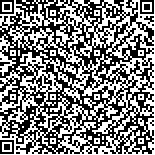| 摘要: |
| 为了探讨在不同氮浓度条件下盐度胁迫对坛紫菜(Pyropia haitanensis)生长和光合生理的影响,设置高(500μmol/L)、低(50μmol/L)2个氮浓度和15、30和45三个盐度水平,将坛紫菜叶状体在不同的氮和盐度条件下适应培养7d后,测定藻体的生长、色素含量、光合放氧和快速光反应曲线等生理指标。结果显示:在低氮条件下,坛紫菜的生长速率随盐度增加而递减;在高氮下, 30盐度水平培养的藻体具有最大生长速率。低氮条件下,叶绿素a(Chl a)、类胡萝卜素(Car)、藻红蛋白(PE)和藻蓝蛋白(PC)的含量在盐度15中较高,而在盐度30和45之间没有显著差异;高氮条件下,盐度对藻体Chl a和Car的含量没有显著影响,但相对于盐度30的处理,盐度15和45都显著降低了PE和PC的含量,虽然这两种色素含量在两个盐度处理间没有显著差异。不同的氮和盐度处理对藻体的光合放氧速率几乎没有影响,除了高氮条件下,单位湿重的放氧速率在盐度30中较低而单位Chl a的放氧速率在盐度45中稍高。从快速光反应曲线的结果看出,盐度虽然对光饱和点(Ik)、电子传递效率(α)和最大相对电子传递速率(rETRmax)没有显著影响,但高盐胁迫显著提高了光抑制项的值(a)。综上所述,高盐度胁迫能够抑制坛紫菜的生长和光合作用,氮的浓度对这种抑制作用没有显著影响;低盐度胁迫对藻体的生长和光合没有抑制,甚至在低氮条件下表现出对生长的促进。这些结果为坛紫菜的栽培和对富营养化海水的修复提供了一定的理论参考。 |
| 关键词: 坛紫菜 盐胁迫 氮 光合作用 快速光反应曲线 |
| DOI:10.11693/hyhz20150400102 |
| 分类号: |
| 基金项目:国家自然科学基金项目,41376129号;海洋公益性行业科研专项经费项目,201305005号,201305021号;青岛市市南区科技发展资金项目,2013-12-005-SW号。 |
|
| EFFECTS OF SALT STRESS ON GROWTH AND PHOTOSYNTHESIS OF PYROPIA HAITANENSIS(RHODOPHYTA) CULTURED UNDER DIFFERENT NITROGEN CONDITONS |
|
WU Hai-Yi1,2, DING Gang1,2, XU Zhi-Guang1,2
|
|
1.Marine Biology Institute of Shandong Province, Qingdao 266104, China;2.Macroalgae Engineering Technology Centre of Qingdao, Qingdao 266104, China
|
| Abstract: |
| To investigate the coupling effects of nitrogen enrichment and salt stress on growth and photosynthesis in Pyropia haitanensis, thalli were cultured under different nitrogen concentrations(500 and 50μmol/L) at 3 salinity levels(15, 30, and 45) for 7 days. The growth rate, pigment content, photosynthetic O2 evolution rate, and rapid light response curve were determined. The results show that at low nitrogen(50μmol/L) level, relative growth rate(RGR) decreased with salinity increase, while at high nitrogen(500μmol/L) level, the maximal RGR occurred at salinity of 30. Under the low nitrogen concentration(50μmol/L), contents of chlorophyll a(Chl a), carotenoid(Car), phycoerythrin(PE), and phycocyanin(PC) were higher at salinity 15 than at 30 and 45, and the difference was found insignificant between the last two salinity treatments. Under high nitrogen condition(500μmol/L), salinity had no effect on contents of Chl a and Car. However, both salt stresses at 15 and 45 reduced evidently the contents of PE and PC with no difference. Both nitrogen and salinity had negligible impacts on photosynthetic O2 evolution rate of algae, except that a lower rate per unit fresh weight was found in salinity 30 and a higher value per unit Chl a in salinity 45 under high nitrogen condition. The rapid light response curve shows that light saturation point(Ik), electron transfer efficiency(α), and the maximum rate of electron transfer(rETRmax) were not affected by salt stress, but salinity at 45 remarkably enhanced light inhibition value of algae. In conclusion, high salinity could inhibit the growth and photosynthesis of P. haitanensis regardless of available nitrogen, while low salinity showed no inhibition on the growth and photosynthesis but promoted the growth rate at low nitrogen level. These results may provide a theoretical reference for P. haitanensis cultivation and eutrophication remediation. |
| Key words: Pyropia haitanensis salt stress nitrogen photosynthesis rapid light response curve |
